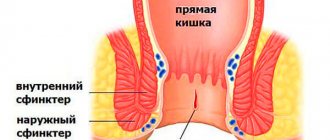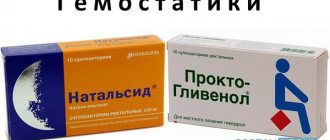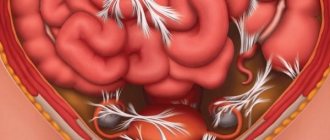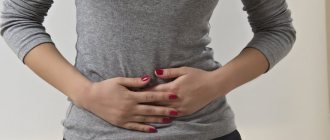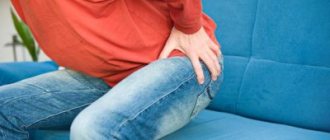Hemorrhoids can become inflamed, and then a person experiences a lot of unpleasant sensations in the anal canal. If severe hemorrhoids appear, what should you do first?
Rectal disease causes agony and suffering for patients
According to statistics, more than 15% of the world's population suffers from hemorrhoids. This disease develops as a result of circulatory problems in the hemorrhoidal veins located in the lower intestine.
Pathology most often manifests itself during pregnancy and after childbirth. Occurs under heavy loads and a sedentary lifestyle. It manifests itself in chronic constipation and diseases of the veins and blood vessels.
What kind of pathology is this
To determine how inflamed internal hemorrhoids hurt, you should find out what kind of pathology it is and what its manifestations are. Most often, the disease develops gradually, without foreshadowing anything about itself from the very beginning. Patients feel discomfort with heaviness in the anus, constipation becomes more frequent, and pain appears after bowel movement. If a person likes spicy food, enjoys drinking alcohol, or carries heavy loads, the pathology intensifies faster.
People do not often immediately pay attention to such changes in the state of their health; only after the symptoms increase does the patient think about the possible development of some kind of disease in the rectum.
Namely:
First signs
- the appearance of seals around the anus;
- traces of blood on paper, linen and feces;
- swelling of the perineum and anorectal canal;
- prolapse of cones into the lumen;
- decreased passage for feces;
- difficulty moving stool through the intestinal capsule.
Hemorrhoid cones are localized both externally and externally; sometimes proctologists diagnose combined hemorrhoids, which are marked by nodes both inside and outside the rectal organ. When hemorrhoidal pathology worsens, the risk of thrombosis increases. This phenomenon requires an immediate proctological examination, diagnostic measures and effective therapy; sometimes it is impossible to do without surgery.
Factors contributing to the development of hemorrhoids
Hemorrhoids are a delicate pathology that is not usually shared with friends or family. Therefore, when women, men and the elderly experience pain in the anus, they endure discomfort and pain in the anorectal area until the last moment, when the pathology reaches an advanced stage.
Pain with formed hemorrhoids in women and men is provoked by several factors:
- Incorrect, unbalanced diet.
We eat right.
Hemorrhoidal pathology occurs in people who greatly overload the intestines. With frequent consumption of fried and fatty foods, sweets, smoked foods. It is junk food that provokes pain in the anus during difficult bowel movements. A lack of fermented milk, cereals, and fresh fruits and vegetables in the diet causes bloating with inflamed hemorrhoids. Poor diet is the main cause of constipation, which increases pressure in the pelvic choroid plexus. Over time, congestion forms in the pelvic organs, which provokes internal hemorrhoidal formation.
Initially, internal hemorrhoids do not manifest themselves with severe symptoms, but over time, without timely treatment, the intensity increases. A diet high in fiber is the main preventive measure to eliminate hemorrhoidal inflammation.
- Sedentary life.
Without regular physical activity and exercise, blood circulation in the pelvic organs and anorectal area is disrupted, and pain appears in the anus and tailbone due to hemorrhoids. Also provocateurs of hemorrhoids are sedentary, heavy, standing work, long-term driving.
- Hard work, pregnancy, difficult childbirth.
Hemorrhoids are provoked by strength sports, pregnancy, and labor during childbirth. Loaders often encounter hemorrhoidal pathology as they constantly move heavy loads. Due to the increased pressure of the growing uterus, pregnant women experience pain in the anus during pregnancy. Labor with strong pushing also causes postpartum hemorrhoids. An occupational disease is called hemorrhoids in athletes and bodybuilders.
- Primary diseases.
The formation of hemorrhoid cones is possible due to existing pathologies: tumor processes, genetic predisposition to varicose veins, addiction to alcohol.
Pain from hemorrhoids, where can the pain radiate?
Varicose hemorrhoidal veins with the formation of nodes around the rectum can develop at any age and affect both men and women .
Pain from hemorrhoids in women occurs during an exacerbation, becoming most intense after bowel movement. The pathological process is accompanied by other symptoms: bleeding, itching, burning.
In this case, you should immediately consult a doctor and take all measures to stop the disease and prevent complications.
Before finding out what hurts with hemorrhoids in women, you should understand what hemorrhoidal disease is and how it manifests itself.
In most cases, the disease develops gradually, and at first there is practically no sign of itself. The patient experiences a feeling of discomfort and heaviness in the anal canal. He often experiences constipation and pain.
Unpleasant sensations intensify when eating spicy food, alcohol, or after lifting weights.
Patients do not always respond to these phenomena, but as the pathological process develops, the symptoms of the disease intensify. Scarlet blood appears in the stool, the nodes become inflamed, swell, and fall out. At the same time, the passage for feces is reduced, the process of their movement becomes more difficult and causes excruciating pain.
Hemorrhoidal cones can be located both inside the end of the rectum and outside, on both sides of the anus. There are also mixed hemorrhoids, in which two forms of pathology are recorded. The disease is especially dangerous during exacerbation, since the likelihood of thrombosis increases significantly. In such cases, the patient requires immediate treatment, and sometimes surgery.
Symptoms of acute hemorrhoids include:
- sensation of a foreign object in the anorectal area;
- pain during bowel movements;
- the appearance of blood in the stool;
- sharp pain in the anus;
- burning, severe itching, etc.
Important! Varicose hemorrhoidal veins are a pathological process that disrupts the natural cleansing of the body. Every trip to the toilet becomes torture for the patient.
Painful sensations from hemorrhoids in women are not uncommon. The development of the disease can be triggered by:
- Physical inactivity. Prolonged sitting on the fifth point causes congestion in the organs located in the pelvic area. If blood circulation is impaired, anal fissures and hemorrhoids may appear.
- Stress, anxiety, psycho-emotional instability. Women are more emotional. They endure stress more easily, which weakens the body.
- Unbalanced diet. Irregular meals, consumption of junk food, strict illiterate diets often lead to the development of hemorrhoids.
- Hard physical work, physical overload. Many women go to gyms and do strength exercises just like men. Such loads do not always benefit the female body. They increase blood flow to the pelvic organs and contribute to the development of unpleasant symptoms.
- Pregnancy and childbirth. According to statistics, half of women who give birth experience hemorrhoidal disease. When carrying a child, the uterus grows, squeezing adjacent organs and blood vessels. Blood flow to the lower part of the body increases, causing stagnation and the appearance of hemorrhoids.
- Menstruation. Pain in the lower abdomen due to hemorrhoids in women can occur before the start of the menstrual cycle and radiate to the lower back. During this period, the pain syndrome is aching and pulling. During menstruation, blood flow increases significantly, so many patients note the first manifestations of hemorrhoidal disease during this period.
To find out whether hemorrhoids can cause pain in the lower abdomen in women, you need to find out the causes of the ailment:
- the occurrence of an inflammatory process;
- damage to the mucous membrane of the rectal area;
- injury to hemorrhoids from hard feces;
- transmission of pain sensations to nerve impulses of other tissues and organs;
- pressure on organs and tissues adjacent to the rectal area.
With inflammation, the mucous membrane of the anorectal canal and the skin of the anus become exhausted and are easily injured when feces pass.
This leads to the appearance of long-term non-healing cracks, wounds, fistulas that bleed after defecation. The more advanced the hemorrhoids, the more blood appears.
Sometimes it flows in a stream even in the absence of tension. Such blood loss affects the entire body and leads to anemia.
Pain from hemorrhoids radiates to the tailbone, abdomen, and groin when hardened feces pass through the stretching intestines. Due to swollen, inflamed nodes, it expands and tries to facilitate movement, which contributes to increased pressure on the uterus, ovaries, and stomach. In this case, women may experience discomfort during sex, and men may experience discomfort during urination.
Important! Experts answer the question whether the stomach can hurt due to hemorrhoids in women. If the nodes are located inside, then as their size increases, the transportation of feces becomes very complicated. There is discomfort, a sharp pain syndrome in the lower abdomen, along the trajectory of their advancement.
When asked whether lower back pain can occur due to hemorrhoids in women, experts answer positively. Such manifestations often develop in the second stage of the disease.
Unpleasant, nagging pain occurs due to a malfunction of the intestines and the psycho-emotional state of the patient, who seems to have severe pain in her stomach and back. Rarely do patients complain that pain from hemorrhoids radiates to the leg and tailbone.
If the disease progresses to a chronic stage, then one of its signs may be a headache that radiates to the temples.
If pain occurs due to hemorrhoids in women, the doctor will tell you what to do at the appointment. He will listen to the patient’s complaints and conduct a digital examination of the anus and rectum.
Internal hemorrhoids can be identified and the condition of the rectal mucosa can be assessed after anoscopy. A special device, an anoscope, is inserted into the rectum 13–14 cm and the condition of the tissue is examined.
Also help to make an accurate diagnosis:
- colonoscopy;
- sigmoidoscopy;
- irrigoscopy.
The patient must undergo a general blood, stool and urine test. Comprehensive diagnostics allows us to identify the true cause of pain due to internal hemorrhoids in women.
Since hemorrhoids hurt in women in the lower part of the body , it can be confused with other pathologies that have similar symptoms:
- tumor growths in the anorectal canal and rectum;
- injury to the rectal area;
- polyps;
- anal fissures;
- Crohn's disease;
- helminthiasis;
- diabetes;
- psoriasis;
- exacerbation of paraproctitis.
Pain in the lower abdomen may indicate inflammation of the appendages, appendicitis, urolithiasis, strangulated inguinal hernia, constipation, diarrhea, and flatulence.
Therapeutic measures can be either conservative or surgical. Itching, burning, pain with hemorrhoids, the treatment of which must be comprehensive, is relieved with analgesic rectal suppositories, ointments, and creams. In addition, the specialist recommends:
- Follow a diet that helps prevent constipation and normalizes blood circulation. After all, these factors often cause complications of varicose hemorrhoidal veins. Proper nutrition can relieve the disease if it is in the early stages.
- Medications. The purpose of oral tablets is to normalize blood flow and make venous vessels more elastic and less fragile. This will help fight the disease itself, and not its severe symptoms.
It happens that with hemorrhoids, the lower abdomen hurts in women. It is especially dangerous when there is a period of exacerbation of the disease in an advanced stage.
Then doctors carry out surgical intervention, because medications and folk remedies cannot be used here.
The choice of surgical procedure depends on the severity of the pathological process and the individual characteristics of the patient.
- Sclerotherapy involves the introduction of a special substance – sclerosant – into the lumen of hemorrhoidal cones. The walls of problem nodes stick together and become overgrown. Typically, this method of treatment is carried out at stages 1 and 2 of the disease.
- Ligation. It is carried out at the second and third stages of hemorrhoids. The method consists of applying special latex rings to the base of the knot. Blood stops flowing into the lump, and its tissues die.
- Cryotherapy . It consists of the effect of cold on the node. After which it dies without pain.
- Laser treatment . During the operation, the node is not removed, but the inflammatory process stops and bleeding stops. The advantages of the method are quick rehabilitation.
Source: https://rekon-restaurant.ru/gemorroy/boli-pri-gemorroe-kuda-mogut-otdavat-boli/
Causes of pain syndrome development
To find out what causes pain in the anus in women during pregnancy, before and after childbirth, it is recommended to undergo a proctological examination and identify the cause.
Pain after bowel movement in women and men can be caused by:
Internal lump
- inflammatory processes in the pelvic organs;
- injuries to the mucous tissues of the rectal organ;
- transmission of the syndrome by nerve roots from other organs;
- increased pressure in organs and tissues adjacent to the anorectal area.
The inflamed mucous membrane and tissues become thinner and, when feces move through the rectal capsule, they injure the mucous membrane. Trauma to the intestine leads to the formation of cracks, fistula tracts, and wounds that do not heal for a long time and bleed after bowel movement. In some cases, blood loss is very massive, which threatens anemia.
With hemorrhoids, pain radiates to the tailbone, abdominal cavity, and groin. The swelling of the inflamed lumps leads to distension of the intestines, so the organ tries to empty itself faster. The impact also has a detrimental effect on the uterus and other genital and digestive organs. During sexual intercourse, women with hemorrhoids also feel discomfort, and in men, hemorrhoids affect the outflow of urine.
Is it possible to overcome discomfort?
How to relieve pain from hemorrhoids? This question is asked by men and women, regardless of age and social status. After visiting a doctor, when the pain becomes particularly acute, and the need arises to treat hemorrhoids at home. The doctor will prescribe all the necessary medications. Procedures must be done regularly. The main thing is to prevent cracks from occurring, which leads to severe bleeding.
Do not neglect the recommendations of a specialist; only a doctor will tell you how to quickly relieve the discomfort of hemorrhoids. As soon as the discomfort passes, patients are advised not to stop treatment in order to consolidate the positive effect. Otherwise, pain will appear in the back and stomach, which will become quite difficult to remove. There is no need to bring it to the stage where the nodes fall out. This is considered an advanced type of the disease. It is not possible to straighten them in every case. Most men do not want to see a doctor until the last minute. It is not right. It is important to take action in time, then the consequences of an unpleasant disease will not bother a person from year to year. There is no need to bring it to surgery when everything can be corrected at the initial stage.
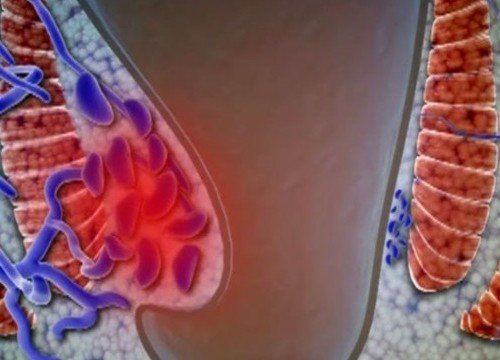
Any attempts cause a rush of blood to the hemorrhoidal cones; their increase in size further prevents the release of feces, which, when released, injure the sphincter and provoke acute pain.
Where does hemorrhoids hurt?
There is no clear answer to the question of where it hurts with inflamed hemorrhoids. The pathology manifests itself as nagging pain due to improper bowel function or psycho-emotional overload. If hemorrhoids are inflamed, how does it hurt, and where does the pain radiate?
Patients complain of painful symptoms in the abdomen and back. Sometimes the pain can radiate to the lower limb, tailbone. With chronic hemorrhoids, headaches often occur in the temples. Hemorrhoids often hurt in the anus during pregnancy and after it.
Hemorrhoidal pain, can hemorrhoids hurt?
: June 15, 2020 at 10:49 am
Three out of ten people over the age of 23 know how hemorrhoids hurt. This significantly reduces the quality of life, causing not only discomfort, but also severe suffering. Not only the nodes can hurt, but also the lower back, back, lower abdomen and even the head!
At the initial stage of the disease, patients experience various painful sensations. This is explained by various factors that provoked the disease. But the main sign of hemorrhoids is considered to be a dull, pulling and aching pain, radiating to the groin, often combined with itching of the anus.
Pain from hemorrhoids after using the toilet and at night
About half of all patients describe the pain as intense, prolonged, and worsening after defecation. The nagging pain that radiates to the groin after using the toilet is explained by the accumulation of a significant number of pain centers in the anal area.
The receptors involved in the pathological process send impulses to the brain, forming this feeling. Fear of aching, pulling or throbbing pain after bowel movement can cause the patient to be afraid of stool, which leads to constipation.
And they, in turn, aggravate the situation.
In the later stages of hemorrhoids, the pain does not go away even during relaxation. A person cannot do physical work or sit. Even in the “lying on your side” position, constant pain is felt.
How does hemorrhoids hurt at different stages?
In a state of sitting, rest, physical activity, the nature of pain due to hemorrhoids may differ from patient to patient. This is explained by a person’s individual ability to “tolerate” unpleasant sensations, and, scientifically speaking, by the pain threshold and stage of pathology.
The onset of the disease may not appear externally. The bumps are not visible because they are hidden under the skin tissue. Symptoms may include discomfort and itching in the anus, minor bleeding.
In the first stage, severe pain rarely occurs. The patient may feel discomfort during hygiene procedures.
Stage 1 ends with a decrease in symptoms if treatment is started in a timely manner or a transition to stage 2, accompanied by painful sensations of a different intensity.
A sign of stage 2 of the disease is periodic prolapse of hemorrhoids. Blood may appear on toilet paper regularly after bowel movements. Physical activity is accompanied by prolapse of cones from the rectum.
Patients complain of a constant urge to defecate. Pain can appear after sex, after visiting the bathroom, physical activity, and radiate to the groin. Stage 2 can last from several days to a month.
If timely measures are not taken, the disease enters the third stage.
At the third stage of the development of the disease, new signs appear: frequent prolapse of hemorrhoidal cones, throbbing pain can be very painful.
Why? Pinching the external hemorrhoidal nodes while sitting with the buttocks and anal sphincters generally causes an unpleasant feeling: the slightest tension, even coughing, resembles torture.
Patients often complain of difficulty moving even over a distance of several meters. This goes on all the time. Even at rest, at night, a person cannot get rid of it.
The advanced form of hemorrhoids manifests itself in severe pain not only during physical activity, but also at rest. Inflammatory processes cover large areas, the pain becomes cutting. Hemorrhoidal cones fall out and enlarge all the time, and prolonged bleeding occurs.
At this stage, thrombosis of hemorrhoidal cones, infection of nodes with pathogenic microflora, and a change in the color of the balls from dark blue to black are observed. The patient cannot go to the toilet, the sensations acquire a continuous aching, tugging character and become sharp when moving.
Many people complain that with acute stage 4 hemorrhoids, the pain radiates not only to the lower back and groin. The location is becoming much wider.
Remission of hemorrhoids is characterized by the disappearance of symptoms. The pain may not bother you for a very long time, sometimes for several months. Painless compactions remain in place of the cones. The acts of defecation do not cause discomfort.
How long can hemorrhoids hurt?
More than a third of all patients confirm that they experience pain for a long time, sometimes several days, not only after bowel movements, but all the time. Aching pain of varying intensity, sometimes accompanied by tingling and itching, is felt around the clock.
This is explained by the fact that in the later stages, hemorrhoids, greatly increased in size due to mechanical damage, become pinched. The cones may have bleeding cracks. Symptoms of inflammation can last long, from several days to several months.
In some patients, the symptoms disappear quite quickly after symptomatic treatment, while in others they can persist for a very long time. There is no clear answer to why this happens.
Proctologists associate the duration of painful symptoms of hemorrhoids with the intensity of inflammation, the ability of tissues to regenerate, absorbable properties, and associated factors, which include lifestyle, activity, and a person’s age.
Diagnostics
To find out the cause of pain in the anorectal region and peritoneum, it is necessary to undergo diagnostic measures with a proctological examination. Arriving at the appointment, the patient must report exactly where hemorrhoids hurt, unless, of course, the patient has already encountered the pathology before. Perhaps the symptoms are associated with other pelvic diseases.
The doctor palpates the intestine and examines the anus. When identifying internal hemorrhoidal inflammation, instrumental examination with an anoscope (anoscopy) is used. During this examination, the proctologist inserts a device into the anus to examine the condition of the intestinal mucous tissue.
Additional instrumental measures include:
- irrigoscopy;
- coloncopy;
- sigmoidoscopy.
Urine and blood tests are mandatory. With a comprehensive diagnostic approach, it is possible to accurately determine the factor provoking pain and prescribe effective therapy.
Differential diagnosis
Pain in the coccyx and abdomen with hemorrhoids is similar to signs of other diseases.
Similar symptoms of hemorrhoids occur with:
Sphincter injury
- polyps;
- tumors;
- anal fissures;
- Crohn's disease;
- helminthiasis;
- diabetes;
- psoriasis;
- acute paraproctitis.
Soreness in the lower peritoneum indicates an inflammatory process in the appendages, appendix, urolithiasis, inguinal hernia, constipation, diarrhea, flatulence.
Treatment
Hemorrhoidal pathology is treated conservatively and surgically. Hemorrhoids and pain in the tailbone with burning, itching, and pain in the anorectal area are eliminated with painkillers in the form of rectal suppositories, ointments, creams, and gels.
In addition to medications, it is recommended:
- dietary nutrition;
- taking tablets to improve blood circulation;
- therapeutic exercises for the anorectal area;
- motor activity.
Surgery
Among the surgical measures used to eliminate hemorrhoids are:
- sclerotherapy - injection of sclerosant into hemorrhoid cones to cause the walls to stick together and heal;
- ligation is an operation intended to eliminate grade 2-3 hemorrhoids (placing latex rings at the base of the lump (preventing the node from feeding);
- cryotherapy – cold therapy on lumps, after which the lump dies;
- laser – elimination of inflammation, blood loss.
Traditional methods of treatment
Pain in the intestines with inflamed hemorrhoids can be eliminated with folk remedies:
Ice suppositories
- Ice – ice suppositories prevent discomfort and relieve tissue inflammation. To prepare candles, you can use chamomile infusion, poured over your fingers in a medical glove and frozen in the freezer. Suppositories are intended for rectal administration.
- Potatoes – the fruit should be used to make a paste for compresses on the anus. Processed potatoes are wrapped in gauze and used for their intended purpose. Keep the compress on the anus for about fifteen minutes, 2 times a day.
- Hemorrhoidal pain radiating to the groin is relieved by washing with cool water.
- You can eliminate anorectal varicose veins with sea buckthorn oil. The product contains a vitamin-mineral complex that has a positive effect on the health of vascular walls, relieves inflammation, and improves regenerative properties in the intestinal mucous tissues.
- Honey-sea buckthorn lotions - two components are mixed in equal quantities. A gauze napkin is dipped in the prepared mixture and applied to the anus for 5-7 minutes three times a day.
General recommendations
You should not allow feces to stagnate in the intestines. It is better to resort to laxatives on the individual recommendation of a doctor. Do not include alcohol and fixative foods in your diet:
- Cheese.
- Blueberries.
- Kissel.
- Strong broths.
- Green bananas.
- Persimmon.
- Pasta.
- White bread.
- Cocoa and tea.
- Fried, smoked, pickled, salted, spicy.
- I love any sausage.
- Boiled milk.
Avoid hypothermia and viral diseases. They greatly weaken the general immune system and can lead to exacerbation of hemorrhoids and bleeding. Do not lift heavy objects, do not overexert yourself, and do not stand or sit for long periods of time. Cleanse your colon more often.
The most harmless remedy is enemas of chamomile infusion half and half with water.
Moderate physical activity is acceptable: gymnastics, swimming pool exercises. This should be done if there is no pain.
What a woman needs to know about hemorrhoid treatment
Carrying a child
When it passes into the anus of a woman during pregnancy, the expectant mother should pay attention to this and inform the local gynecologist. Any pathological manifestation must be prevented at an early stage of development.
Treatment is prescribed according to parameters, depending on what pain is felt with hemorrhoids. Some pregnant women think that the discomfort is temporary and will go away on its own, but this is completely wrong. Hemorrhoids with the development and enlargement of the uterus only further aggravate the situation of the expectant mother.
After diagnosing the condition of the anorectal veins, the proctologist prescribes approved therapy, which helps reduce anxiety and prevent hemorrhoidal development. The main therapy is prescribed after the baby is born.
Prevention
If there is pain in the anus in women, men, the elderly or children, it is necessary to undergo a proctological examination to identify the cause of the disease and establish the correct diagnosis.
After treatment, preventive measures should be followed:
Walking outdoors
- Eat a balanced diet, avoiding fast foods, hot, fried, spicy foods, and smoked foods.
- You need to eat in fractional portions, but often (6-7 times a day).
- Do exercises in the morning.
- To walk.
- After bowel movements, wash the anus with cool water.
- Do not wear tight, synthetic underwear.
- Monitor your psycho-emotional state and be examined annually by a proctologist.
Pain in the abdominal cavity can appear for various reasons. Without a proctologist, you cannot diagnose the disease and select therapy. Diseases are best treated at the beginning of their development.
